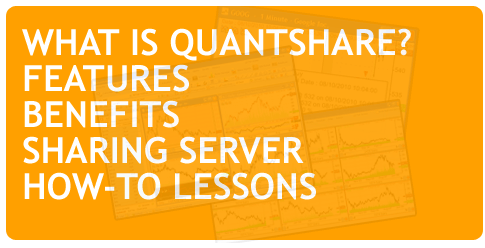You want to keep an eye on some metrics for the trading positions you have bought? Display, in a single view, several metrics for each stock or security you own? The first attempt You can of course add your positions (stocks, futures or ETFs) in a dynamic watchlist and creates as many trading indicators as you want. However, with this method you will not have access to specific measures such as the entry price, current position drawdown or the number of days since the position was purchased or short sold. Furthermore, you will have to manually enter and remove trading positions each time your portfolio composition changes. Custom metrics for you trading positions Have you ever tried to right click on the table under the "Positions" tab in the portfolio plug-in (Portfolio -> Portfolio)? Do it and a menu will appear. Click on "Add Formula Columns" to open the "Custom Columns" form. You can now create as many columns as you want and the formulas of these columns will be applied to the trading positions you are currently holding. All you have to do is click on the "Add" button to create a new column, update the column name and then type in an trading indicator. As with creating trading rules or displaying graphs, you have access to a list of +300 indicators in addition to trading indicators shared by members of QuantShare Trading Software. As an example, you can type "RSI(14)" to display the last value of the 14-Bar Relative Strength Index of each trading position in your portfolio. Tags for additional measures But how to access specific measures that differ from one position to another? (Return, Holding Period, Drawdown, Entry price, Commissions) It is very easy; all you have to do is add one of the tags described in the "Custom Columns" form. To display the performance of a position per trading bar, you can for example type in the following indicator: [RETURN]/[PERIOD] This formula will then be applied to all the available positions within your portfolio. To calculate the simple moving average of each trading position using a period that is equal to the underlying security's holding period, simple type: SMA(close, [PERIOD]) To calculate the break-even point for a long position, add the buy price to the commission value (per position). This can be translated into: [PRICE] + [COM] If you need additional tags in order to create specific columns for you trading positions, please send us an email to support@quantshare.com explaining the metric behind this tag and we will implement it ASAP.
|

|
|
|
|







